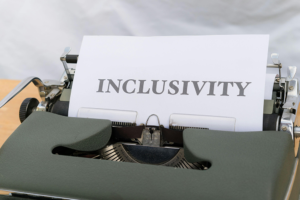Community Engagement and Needs Assessment:
-
- Example: Suppose we’re working with a low-income neighborhood facing health disparities.
- Steps:
- Organize community meetings or virtual sessions to listen to residents’ concerns.
- Conduct surveys or interviews to understand health-related challenges.
- Collaborate with local clinics or community health workers to gather insights.
Education and Awareness:
-
- Example: Imagine a community center in need of technology literacy.
- Steps:
- Host workshops on basic computer skills, internet usage, and AI concepts.
- Explain how AI can improve daily life (e.g., personalized health recommendations).
Collaborate with Local Organizations:
-
- Example: Partner with a local nonprofit focused on education.
- Steps:
- Reach out to the nonprofit’s leadership and propose collaboration.
- Discuss joint initiatives, such as creating an AI curriculum for students.
Low-Cost AI Solutions:
-
- Example: Let’s explore a project related to crop yield prediction.
- Steps:
- Use open-source libraries (e.g., TensorFlow) for machine learning.
- Collect historical crop data (yield, weather, soil conditions).
- Train a simple regression model to predict future yields.
Skill Development:
-
- Example: Empower youth with coding skills.
- Steps:
- Offer coding bootcamps or online courses (e.g., Python basics).
- Encourage practice through small projects (e.g., building a weather app).
Local Data Collection and Labeling:
-
- Example: Let’s create an air quality prediction model.
- Steps:
- Set up air quality sensors in the community.
- Collect data on pollutants (PM2.5, ozone levels).
- Label the data (clean vs. polluted days).
Community-Driven Projects:
-
- Example: Addressing education gaps using adaptive learning.
- Steps:
- Collaborate with local schools or after-school programs.
- Develop an adaptive learning platform (e.g., personalized math exercises).
- Involve teachers and students in testing and feedback.
Budget Considerations:
-
- Example: Creating a community health app.
- Steps:
- Estimate costs for app development (software developers, UI/UX design).
- Seek grants from health foundations or tech companies.
- Allocate funds for user testing and maintenance.
Ethical and Inclusive AI:
-
- Example: Prevent bias in loan approval models.
- Steps:
- Involve community members in defining fairness criteria.
- Regularly audit the model for bias.
- Educate decision-makers on ethical AI practices.
Remember, adapt these examples to your community’s context and needs. Collaboration, transparency, and sustainability are key! 🌟 .
How can we involve local schools in AI projects?
Involving local schools in AI projects is a fantastic way to foster interest, skill development, and community engagement. Here are some steps to engage schools:
Curriculum Integration:
-
- Collaborate with teachers to integrate AI concepts into existing subjects (e.g., math, science, computer science).
- Create age-appropriate lessons on data analysis, algorithms, and ethical AI.
AI Clubs or Extracurricular Activities:
-
- Establish AI clubs or coding clubs within schools.
- Organize workshops, hackathons, or guest lectures by AI professionals.
Student Projects:
-
- Encourage students to work on AI-related projects.
- Examples: Predictive models (e.g., weather, stock prices), chatbots, or image recognition.
Partnerships with Universities or Industry:
-
- Connect schools with local universities or tech companies.
- Arrange field trips, mentorship programs, or joint projects.
Community Challenges:
-
- Host AI challenges or competitions.
- Involve students in solving real-world problems (e.g., pollution monitoring, traffic optimization).
Resources and Tools:
-
- Provide access to online AI courses (e.g., Coursera, edX).
- Use free tools like Google Colab for hands-on practice.
Remember, inspiring the next generation of AI enthusiasts starts with education and practical experience!
Please provide more details and examples; expand on each point.
Certainly! Let’s dive deeper into each point, providing more details and practical examples for involving local schools in AI projects:
Curriculum Integration:
-
- Details:
- Work closely with teachers to align AI concepts with existing subjects.
- Integrate AI topics into math (probability, statistics), science (data analysis), and computer science (algorithms, programming).
- Examples:
- Math Class: Teach probability using coin toss simulations or predicting dice outcomes.
- Science Class: Analyze environmental data (e.g., pollution levels) to understand trends.
- Computer Science Class: Introduce basic Python programming for data manipulation.
- Details:
AI Clubs or Extracurricular Activities:
-
- Details:
- Create a space for students to explore AI beyond the regular curriculum.
- Encourage hands-on learning, collaboration, and creativity.
- Examples:
- AI Club Meetings: Discuss AI news, share projects, and invite guest speakers.
- Hackathons: Organize mini-hackathons where students build simple AI models (e.g., sentiment analysis on social media data).
- Details:
Student Projects:
-
- Details:
- Empower students to work on AI-related projects independently or in teams.
- Encourage problem-solving and critical thinking.
- Examples:
- Predictive Models: Students can predict stock prices, weather, or disease outbreaks using historical data.
- Chatbots: Build a chatbot for answering common school-related questions.
- Details:
Partnerships with Universities or Industry:
-
- Details:
- Leverage external expertise and resources.
- Foster mentorship and real-world exposure.
- Examples:
- University Collaboration: Invite university professors for guest lectures or workshops.
- Industry Partnerships: Connect with local tech companies for internships or joint projects.
- Details:
Community Challenges:
-
- Details:
- Engage students in solving community problems using AI.
- Encourage creativity and teamwork.
- Examples:
- Pollution Monitoring: Students can build air quality prediction models based on sensor data.
- Traffic Optimization: Optimize school bus routes using AI algorithms.
- Details:
Resources and Tools:
-
- Details:
- Provide accessible tools for learning and experimentation.
- Emphasize practical skills.
- Examples:
- Online Courses: Recommend free online courses (e.g., Coursera’s “Introduction to AI”).
- Google Colab: Use this free platform for hands-on coding practice.
- Details:
Remember, adapt these ideas to your school’s context, student interests, and available resources. Encourage curiosity and a growth mindset!
How can we involve parents in AI education?
Involving parents in AI education is essential for fostering a holistic learning environment. Here are some strategies:
Workshops and Webinars:
-
- Organize sessions specifically for parents to introduce AI concepts.
- Cover basics like machine learning, data science, and ethical considerations.
- Provide practical examples relevant to everyday life.
Parent-Teacher Collaborations:
-
- Encourage dialogue between teachers and parents.
- Discuss how AI is integrated into the curriculum.
- Share student projects and achievements.
Family Coding Nights:
-
- Host coding events where parents and children learn together.
- Use kid-friendly platforms (e.g., Scratch) to create simple AI projects.
- Foster a supportive, fun atmosphere.
Newsletters and Updates:
-
- Include AI-related content in school newsletters.
- Share success stories, upcoming events, and resources.
- Keep parents informed about AI initiatives.
Parent-Child Projects:
-
- Suggest joint AI projects at home.
- Examples: Building a chatbot, analyzing family health data, or creating a recommendation system for movies.
Community Talks:
-
- Invite AI professionals or researchers to speak at school events.
- Parents can attend and learn firsthand from experts.
Remember, involving parents creates a stronger educational ecosystem and empowers students to explore AI confidently!
Following are practical steps for implementing AI in under-resourced communities, along with budget considerations and potential grant opportunities.
| Step | Description | Cost Estimate (USD) |
| 1. Community Engagement and Needs Assessment | Engage community members, conduct surveys, interviews, and focus groups. | Low (time and effort) |
| 2. Education and Awareness | Organize workshops, webinars, and educational events. | Low (venue and materials) |
| 3. Collaboration with Local Organizations | Partner with nonprofits, schools, and experts. | Low (networking) |
| 4. Low-Cost AI Solutions | Use open-source libraries (e.g., TensorFlow, PyTorch). Explore free cloud services. | Minimal |
| 5. Skill Development | Train community members in programming, data analysis, and ML. | Low (training materials) |
| 6. Local Data Collection and Labeling | Collect relevant data and label it for ML tasks. | Minimal |
| 7. Community-Driven Projects | Start small with specific projects (e.g., healthcare, agriculture, education). | Varies |
| 8. Ethical and Inclusive AI | Prioritize fairness and inclusivity. Involve community in decision-making. | Minimal |
Budget Considerations:
- Hardware: If needed (e.g., Raspberry Pi, low-cost laptops), estimate $200 – $500 per unit.
- Software Licenses: Open-source tools are free, but consider any proprietary software licenses.
- Training and Workshops: Venue rental, materials, and facilitator fees. Estimate $500 – $1,000 per event.
- Data Collection: Minimal cost for data storage and transportation.
- Community Projects: Varies widely based on scope. Estimate $1,000 – $5,000 per project.
- Total Budget: Approximately $3,000 – $10,000 (initial phase).
Grant Opportunities:
- Local Foundations: Research local foundations or community grants that support technology initiatives.
- Government Grants: Explore federal, state, or municipal grants for community development.
- Corporate Social Responsibility (CSR): Some companies offer grants for community projects.
- Tech Companies: Look for AI-specific grants from tech giants (e.g., Google AI Impact Challenge).
- Nonprofit Organizations: Seek partnerships with nonprofits focused on community empowerment.
Remember, grant availability varies by location and project alignment. Tailor your grant proposals to specific funders’ priorities. Good luck with your community-driven AI initiatives! 🌟
Budget Considerations:
Hardware Costs:
-
- Example: Suppose you plan to deploy AI models on low-cost devices like Raspberry Pi or refurbished laptops.
- Estimated Cost: $200 – $500 per unit.
Software Licenses:
-
- Open-source tools (e.g., TensorFlow, PyTorch) are free, but consider any proprietary software licenses.
- Some AI platforms offer free tiers (e.g., Google Cloud AI, Microsoft Azure).
- Estimated Cost: Minimal (depends on specific needs).
Training and Workshops:
-
- Conduct workshops to train community members in AI-related skills.
- Costs include venue rental, materials, and facilitator fees.
- Example: Hosting a weekend workshop on Python programming and basic ML concepts.
- Estimated Cost: $500 – $1,000 per event.
Data Collection and Labeling:
-
- Collect relevant data from the community (e.g., health records, environmental data).
- Label data for supervised machine learning tasks.
- Estimated Cost: Minimal (data storage and transportation).
Community-Driven Projects:
-
- Start small with specific projects aligned with community needs:
- Healthcare: Predictive models for disease outbreaks.
- Agriculture: Crop yield prediction using satellite imagery.
- Education: Adaptive learning platforms for students.
- Environmental Monitoring: Air quality prediction.
- Costs vary based on project complexity.
- Estimated Cost: $1,000 – $5,000 per project.
- Start small with specific projects aligned with community needs:
Ethical and Inclusive AI:
-
- Prioritize fairness, transparency, and community involvement.
- Estimated Cost: Minimal (time and effort).
Grant Opportunities:
Local Foundations and Community Grants:
-
- Research local foundations or community organizations.
- Look for grants supporting technology initiatives, education, or community development.
- Example: Apply for the “Tech for Good” grant from a local philanthropic organization.
- Potential Funding: $1,000 – $10,000.
Government Grants:
-
- Explore federal, state, or municipal grants.
- Focus on programs related to education, technology, and social impact.
- Example: Apply for a Department of Education grant for STEM education.
- Potential Funding: Varies widely.
Corporate Social Responsibility (CSR):
-
- Some companies allocate funds for community projects.
- Research tech companies with CSR initiatives.
- Example: Apply for a Google Impact Challenge grant.
- Potential Funding: $10,000 – $100,000.
Tech Companies and AI-Specific Grants:
-
- Look for AI-focused grants from tech giants.
- Check their eligibility criteria and alignment with your project.
- Example: Microsoft AI for Earth offers grants for environmental projects.
- Potential Funding: $5,000 – $50,000.
Nonprofit Organizations and Partnerships:
-
- Collaborate with nonprofits working in your community.
- Seek joint grant applications or funding partnerships.
- Example: Partner with a local health clinic for an AI healthcare project.
- Potential Funding: Varies based on collaboration.
Remember, grant availability varies by location and project alignment. Craft compelling proposals, demonstrate community impact, and leverage existing networks to secure funding. Best of luck with your community-driven AI journey! 🌟



0 Comments